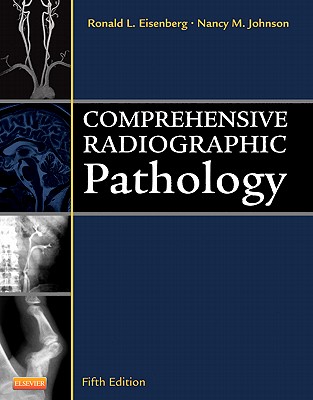Radiology and pathology are so intimately linked–with the former being essentially a field that is dedicated to the interpretations of shadows of the latter–that one would expect to find at least a few dozen comprehensive books about radiologic-pathologic correlations. There are, in fact, only a small handful of them in existence, with Comprehensive Radiographic Pathology (2011) by Ronald L. Eisenberg MD being among the best.

The definitions of various pathological conditions provided by the book are straightforward and crisp. Take, for example, adynamic ileus, which is defined as a “disorder of intestinal motor activity in which fluid and gas do not progress normally through a non obstructed small and large bowels” (p. 182). Further, the supplied images are classic, indelible and Board-worthy, and the book, in almost every instance, elucidates how the images relate to the underlying pathology and pathophysiology. That is exactly what one should expect from a good radiology book.
In future editions, I would like to see even more CT images, particularly of the abdomen. While barium studies can be more instructive from a visual standpoint, my guess is that in clinical practice CT scans of the abdomen are up to 50 times more common than barium studies. Additionally, I would like to see the imaging study of choice bolded or highlighted in some other way. For example, the authors write that “Echocardiography is the only non-invasive procedure that can detect the valvular vegetations that are the hallmark of infective endocarditis.” I think that test-takers might benefit from further elucidations with a bolded statement like, “trans-esophageal echocardiography is the most sensitive imaging study for bacterial endocarditis.” That way, reviews can skim through the book before test day and pick up a lot of extra points quickly.
The book extremely relevant to medical students, despite the fact that it was apparently written with radiologic technologists in mind. Medical students would undoubtedly benefit from using this book during a course in pathology, a radiology rotation, or during review sessions for Steps 1 and 2 of the USMLE. I recommend this book very highly.


Leave a Reply